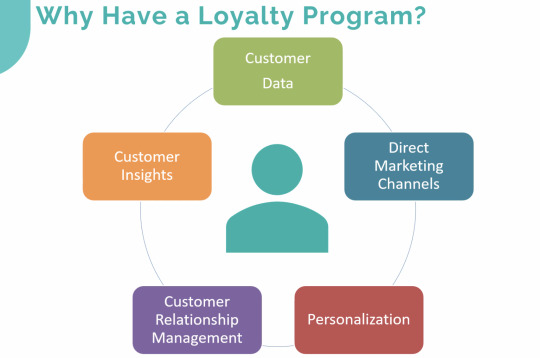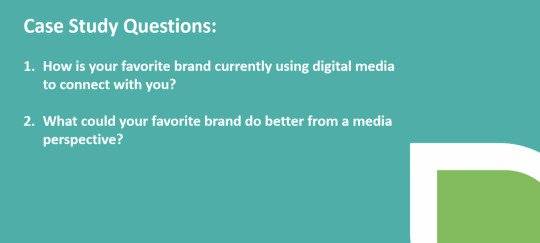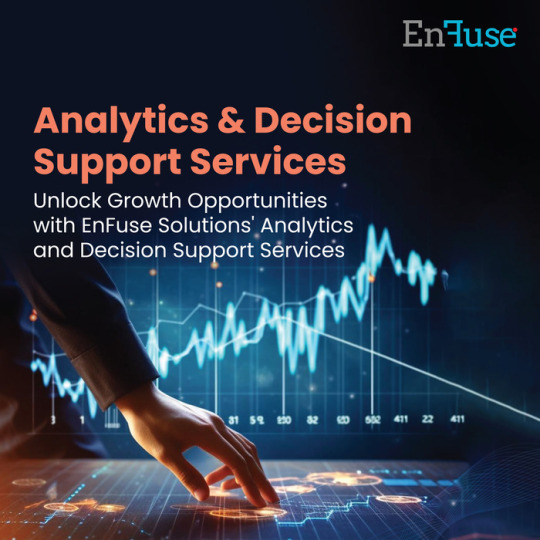#DigitalAnalytics
Explore tagged Tumblr posts
Text
#digitalmarketing#branding#searchengineoptimization#marketing#advertising#google ads#social media#advertisements#seo#digitalanalytics#digital marketing analytics
2 notes
·
View notes
Text
What is the benefit of Adobe Analytics?
Adobe Analytics is a robust digital analytics platform that empowers businesses to extract actionable insights from their data, transforming raw information into meaningful intelligence to drive decision-making, optimize marketing strategies, and enhance customer experiences. Partner with EnFuse Solutions to strengthen your data-driven decision-making and stay ahead in today’s competitive landscape.
#AdobeAnalytics#AdobeAnalyticsServices#DataDrivenDecisions#DigitalAnalytics#CustomerJourneyInsights#RealTimeAnalytics#MarketingPerformance#AdobeExperienceCloud#BehavioralAnalytics#AnalyticsForGrowth#BusinessIntelligence#WebAnalyticsTools#EnFuseSolutions#EnFuseSolutionsIndia
0 notes
Text
Analytics and Reporting in Adobe Experience Manager
In the evolving field of digital experience management, Adobe Experience Manager (AEM) stands out with advanced analytics and reporting features. EnFuse Solutions India exemplifies AEM's power in delivering exceptional digital experiences, enabling businesses to optimize strategies, unlock data insights, and enhance engagement for industry excellence.
#AdobeAnalytics#AdobeReporting#AnalyticsAndReporting#DataInsights#BusinessIntelligence#DigitalAnalytics#WebAnalytics#PerformanceMetrics#DataVisualization#MarketingAnalytics#CustomerInsights#AdobeExperienceCloud#DataDrivenDecisions#AdobeAnalyticsServices#EnFuseSolutions#EnFuseSolutionsIndia
0 notes
Text
Future-Proof Your Decisions with EnFuse’s Analytics Services

EnFuse’s analytics services empower businesses to future-proof decisions with advanced digital market research, sentiment analytics, campaign analytics, and omnichannel analytics. Stay competitive by harnessing real-time insights, optimizing performance, and making data-driven decisions that adapt to market changes and customer behavior. Discover how EnFuse Solutions’ analytics and decision support services can elevate your business: https://www.enfuse-solutions.com/services/data-management/analytics-decision-support-services/
#DecisionSupportServices#DigitalAnalytics#DigitalAnalyticsServices#DigitalAnalyticsCompaniesIndia#CampaignAnalytics#SentimentAnalytics#DigitalMarketResearch#EnFuseSolutions
0 notes
Text
Digital Analytics
Unleashing the Power of Digital Analytics: A Comprehensive Guide
In today's fast-paced digital landscape, understanding how users interact with your online assets is crucial. Enter digital analytics—a powerful tool that allows businesses and individuals to decode user behavior, track performance metrics, and optimize their digital presence. Whether you're running an e-commerce site, managing a blog, or overseeing a digital marketing campaign, digital analytics provides the insights needed to drive informed decisions and achieve your goals.
What is Digital Analytics?
Digital analytics is the process of collecting, measuring, and analyzing data from digital channels such as websites, social media, email, and mobile apps. The primary objective is to understand user behavior, gauge the effectiveness of marketing strategies, and make data-driven decisions to enhance performance and user experience.
Why Digital Analytics Matters
Measure Performance: Digital analytics provides real-time data on how your digital assets are performing. From tracking website traffic and user engagement to monitoring conversion rates and ROI, analytics tools offer a comprehensive view of your digital performance.
Understand User Behavior: By analyzing user interactions, you can gain insights into how visitors navigate your site, what content they find most engaging, and where they drop off. This knowledge helps tailor your content and user experience to better meet their needs.
Optimize Marketing Strategies: Digital analytics helps evaluate the effectiveness of your marketing campaigns. By tracking metrics like click-through rates, bounce rates, and conversion rates, you can refine your strategies to maximize impact and minimize waste.
Enhance User Experience: With data on user behavior, you can identify pain points and opportunities for improvement. Whether it’s optimizing site speed, improving navigation, or customizing content, analytics guides you in creating a more user-friendly experience.
Drive Business Decisions: Data-driven decisions are more effective than gut feelings. Digital analytics equips you with actionable insights that can inform your business strategy, from product development to customer service enhancements.
Key Metrics in Digital Analytics
Traffic Sources: Understand where your visitors are coming from—search engines, social media, direct visits, or referrals. This helps you allocate resources effectively and focus on high-performing channels.
User Engagement: Metrics like average session duration, pages per session, and bounce rate reveal how engaged users are with your content. High engagement typically indicates valuable and relevant content.
Conversion Rates: Track the percentage of visitors who complete a desired action, such as making a purchase, signing up for a newsletter, or downloading a whitepaper. This metric is crucial for measuring the success of your goals and campaigns.
Customer Lifetime Value (CLV): CLV measures the total revenue a business can expect from a single customer throughout their relationship. This metric helps in understanding the long-term value of customer acquisition efforts.
Churn Rate: The churn rate indicates the percentage of users who stop engaging with your product or service over a specific period. A high churn rate can signal issues with user satisfaction or product value.
Tools for Digital Analytics
Several powerful tools are available to help you harness the power of digital analytics. Here are some of the most popular ones:
Google Analytics: A comprehensive tool that provides in-depth insights into website performance, user behavior, and traffic sources. Its features include real-time data, customizable reports, and goal tracking.
Adobe Analytics: Known for its robust data analysis capabilities, Adobe Analytics offers advanced segmentation, predictive analytics, and integration with other Adobe products.
Matomo: An open-source alternative to Google Analytics, Matomo offers detailed reporting, user privacy features, and customizable dashboards.
Hotjar: This tool provides heatmaps, session recordings, and surveys to help you understand user behavior and gather feedback.
Mixpanel: Focused on product analytics, Mixpanel allows you to track user interactions and segment data to understand how users engage with your product or service.
Best Practices for Effective Digital Analytics
Set Clear Objectives: Define what you want to achieve with your digital analytics efforts. Whether it's increasing traffic, improving user engagement, or boosting conversions, clear objectives help in choosing the right metrics and tools.
Implement Tracking Codes: Ensure that tracking codes are properly installed on your website and other digital platforms. This step is essential for accurate data collection and analysis.
Regularly Review Data: Analytics is not a one-time task. Regularly review and analyze your data to stay informed about trends, performance, and areas for improvement.
Segment Your Data: Analyze data by different segments—such as demographics, traffic sources, or user behavior—to gain more granular insights and tailor your strategies accordingly.
Leverage Data for Actionable Insights: Use the insights gained from analytics to inform your strategies, optimize your digital presence, and enhance user experience.
Conclusion
Digital analytics is more than just a buzzword; it's a vital component of a successful digital strategy. By leveraging the power of data, businesses and individuals can gain valuable insights, optimize performance, and make informed decisions. Embrace digital analytics, and unlock the potential to elevate your digital presence and drive meaningful results.
Whether you're new to analytics or looking to refine your existing strategies, understanding and utilizing digital analytics is key to staying ahead in the digital world.
#DigitalAnalytics#DataDriven#WebAnalytics#UserBehavior#PerformanceMetrics#MarketingOptimization#BusinessIntelligence#GoogleAnalytics#AdobeAnalytics#Matomo#Hotjar#Mixpanel#ConversionRate#CustomerInsights#DataAnalysis#DigitalMarketing#WebsiteOptimization#UserExperience#AnalyticsTools#MarketingStrategy#DataInsights
0 notes
Text

A well-configured analytics setup is crucial for any e-commerce business, acting as the eyes and ears of your online operation. Just like a physical store owner keeps track of inventory, foot traffic, and customer behavior, website analytics provide invaluable insights into your online performance.
Here's why a proper analytics setup is essential for e-commerce businesses:
1. Understand Your Customers
Analytics programs such as Google Analytics show you how visitors use your website, the products they look at, and the point at which they leave the buying process. You may utilize this data to pinpoint problem areas and enhance the user experience to increase conversion rates.
Recognize their inclinations: Analytics may provide you with information on the demographics that are most interested in your products, the devices they use, and even where they live. You can target and tailor your marketing campaigns with the use of this information. This information allows you to personalize your marketing efforts and target the right audience with relevant messages.
2. Measure Marketing Campaign Effectiveness
Track ROI: Analytics enables you to more efficiently plan your cash by revealing which marketing channels are bringing in traffic and conversions. The campaigns that are giving you the best value for your money can be found by measuring the return on investment (ROI) of each one. Optimize your campaigns: By analyzing data on click-through rates, bounce rates, and conversion rates, you can refine your marketing campaigns to improve their performance. A/B testing different ad copy, landing pages, and calls to action can help you identify the most successful strategies.
#webanalytics#analytics#googleanalytics#seo#dataanalytics#digitalmarketing#marketinganalytics#businessanalytics#bigdataanalytics#marketing#digitalanalytics#peopleanalytics#sportsanalytics#advanceanalytics#predictiveanalytics#socialanalytics#instagramanalytics#videoanalytics#webdesign#analyticsnews#usdjahid#emailmarketing#socialmediamarketing#analyticsx#marketingdigital#analyticsbrazil#hranalytics#website#analyticsteam#septjahid
1 note
·
View note
Text
#CertifiedDigitalMarketing#TransorzeSolutions#DigitalMarketingTraining#SEO#SEMCertification#SocialMediaMarketing#EmailMarketing#DigitalAnalytics
0 notes
Text
Reflective Journal: Insights from Brian Morrison’s Talk on Loyalty and Digital Media Marketing
As a postgraduate student in digital media marketing at George Brown College, I recently had the incredible opportunity to attend a lecture by Brian Morrison, a senior director at Rexall and a proud alumnus of our school. Brian’s session was full of precious knowledge and experience in modern marketing strategies, sharing insights into customer loyalty programs, personalization, and media channels, coupled with his inspiring career journey. In this blog, I’d like to share the key takeaways from his informative and inspiring talk, and explore how these insights could shape his career path.Let’s go!

The Speaker's Message
Morrison shared his profound knowledge on the significance of loyalty programs, digital media marketing, and analytics. He began by sharing the multifaceted benefits of loyalty programs. These programs are not just about rewarding customers but are crucial in collecting valuable customer data, gaining deep customer insights, and using these insights to create direct marketing channels, allowing to enhance personalization and effective customer relationship management.
Morrison explained how the role of a Customer Data Platform (CDP) integrates various owned direct channels, customer service interactions, in-store touchpoints, and digital media channels to facilitate personalized offers and promotions, which can significantly boost customer engagement and loyalty. Along with sharing how different media can be effective in each funnel stage, he also had a discussion with us on measurement KPIs, stressing the importance of tracking impressions, clicks, views, site traffic, and sales to optimize marketing efforts. In addition, he addressed the advantages of shifting to digital media, such as enhanced audience targeting, continuous engagement, flexible investment options, real-time measurement dashboards, and the ability to test and learn from various campaigns.
Throughout the session, Morrison maintained a conversational tone, not only kept us engaged but also allowed for a deeper exploration of the topics discussed. The use of real-world examples clearly showed how the marketing theories we learned are used in real life situations.
At the end of the session, he did a case study asking two questions about how our chosen brand can improve on digital media connection. After listening to each group’s sharing, he also provides some valuable insights and stories with us, which really deepen the impression of how digital media is affecting nowadays marketing strategies.


Key Learnings from the Speaker
From Morrison’s speech, I learned the critical role loyalty programs play in modern marketing strategies. They not only help in collecting valuable customer data but also enable personalized marketing efforts that can significantly improve customer retention and satisfaction. When he mentioned how Customer Data Platform offers a cohesive approach to managing customer interactions across multiple touchpoints and channels, I was especially intrigued since it relates the most with the project I did about how we can utilize collected data in each channel to help bettering customer relationship management while I was in university.
I am super excited that I get to associate my experience from his sharing. I reflected a lot when he was talking about media channels and their roles in different stages of the marketing funnel. I wondered if we had the resources to choose a different media mix, maybe the project I did in college would reach a totally different, and a more quantifiable outcome.
Reflecting on Brian Morrison’s Career Path
Morrison’s journey from business administration to digital marketing, the shift, although, might not be a complete huge change, must require a lot of adaptation and learning in the progression of becoming a senior director at a big chain drug store. For me, it was a powerful reminder that one’s career path is not linear and that the ability to pivot and embrace new opportunities is crucial. Moreover, as a marketer, the ability to stay ahead of trends and a quick adaptation of a fast-changing marketing environment is a need. In addition, continuous learning, implementing and testing would be our jobs, and this is what excites me the most to be an aspiring marketer, we get to keep seeking new knowledge and skills. As I continue my studies at George Brown College, I am excited to apply these lessons and explore new opportunities in the dynamic field of digital media marketing.
#business#digital marketing#customer loyalty#digitalanalytics#customer relationship management#rexall#loyalty program
1 note
·
View note
Text
Transform your business with insider knowledge on mastering digital marketing in Canada. Achieve remarkable growth and outshine your competitors!
#digitalmarketing#analytics#monitoranalytics#marketingstrategy#improveroi#websitetraffic#userbehavior#socialmediaengagement#onlinepresence#digitalmarketingtips#webanalytics#datanalysis#beginnersguide#measuringsuccess#strategyoptimization#onlinemarketing#roioptimization#digitalanalytics#understandinganalytics#marketingmaven
0 notes
Text
Top Digital Analytics Trends in 2024: Key Insights
Stay ahead in the rapidly evolving field of digital analytics with these top trends for 2024:
AI and Machine Learning Integration: Enhance predictive accuracy, enable real-time analytics, and automate insights to optimize marketing and operations.
Privacy and Data Governance: Prioritize compliance with regulations like GDPR and CCPA, build robust data governance frameworks, and ensure transparent data practices to gain consumer trust.
Customer Journey Analytics: Invest in mapping the customer journey to improve experiences, identify pain points, and tailor personalized marketing strategies.
Unified Data Platforms: Break down data silos by integrating data across departments for a holistic view and better decision-making.
Real-Time Analytics: Leverage real-time insights to respond swiftly to market changes, optimize campaigns, and enhance customer interactions.
Stay informed and adapt to these trends to make data-driven decisions and excel in the digital landscape.
For a deeper dive, check out our detailed blog: https://marcitors.com/blogs/top-5-trends-shaping-digital-analytics-in-2024
1 note
·
View note
Text

Looking for ways to take your business to the next level? 📈💼 Embrace digital solutions tailored to your specific needs and witness the transformation they bring. 💻✨
#digitalmarketing#marketingstrategy#onlinemarketing#socialmediamarketing#digitalagency#digitalbusiness#digitaltransformation#digitalstrategy#digitaladvertising#digitalbranding#digitalconsulting#digitalgrowth#digitalpresence#digitalcampaigns#digitalinnovation#digitalanalytics#digitaltrends#digitalconsultancy#digitaloptimization#digitalsolutions
1 note
·
View note
Text
Streamline Operations with EnFuse Solutions' Decision Support Services

Looking to streamline your business operations and make more informed decisions? EnFuse Solutions’ decision support services can help! Their expert team will provide strategic insights and actionable recommendations to optimize your processes and drive efficiency. Connect with EnFuse Solutions today to empower your business with data-driven decisions: https://www.enfuse-solutions.com/services/data-analytics-services/analytics-decision-support-services/
#DecisionSupportServices#DigitalAnalytics#DigitalAnalyticsServices#DigitalAnalyticsCompaniesIndia#SocialMediaAnalytics#DigitalMarketingAnalytics#CampaignAnalytics#SentimentAnalytics#DigitalMarketResearch#EnFuseSolutions
0 notes
Text
What Are The Best Features Of Adobe Analytics?
Adobe Analytics is a powerful tool that, when used effectively, can transform your digital analytics and marketing strategies. With its advanced features and capabilities, combined with the support of top-tier service providers like EnFuse Solutions, you can take your analytics to the next level and achieve your business objectives.
0 notes
Text
Unlock Growth Opportunities with EnFuse Solutions' Analytics and Decision Support Services

Elevate your business potential with EnFuse Solutions' cutting-edge analytics and decision support services. Their expert team will help you identify growth opportunities and make informed strategic decisions that will take your business to the next level. Get in touch with EnFuse Solutions today for comprehensive analytics and decision support services: https://www.enfuse-solutions.com/services/data-management/analytics-decision-support-services/
#DecisionSupportServices#DigitalAnalytics#DigitalAnalyticsServices#DigitalAnalyticsCompaniesIndia#SocialMediaAnalytics#DigitalMarketingAnalytics#CampaignAnalytics#EnFuseSolutions
0 notes
Text
Data-Driven Decisions: Unleashing the Power of Analytics for Optimized Digital Marketing
Ditch the guesswork, embrace the insights! In the ever-evolving world of Digital Marketing, data reigns supreme. It's the fuel that powers informed decisions, optimizes campaigns, and propels businesses towards success. But how do you harness this data effectively? Enter the magic of analytics!
youtube
Why Analytics Matter in #DigitalMarketing:
Imagine navigating a maze blindfolded. That's what marketing decisions without data feel like. Analytics acts as your guiding light, providing crucial insights into:
Audience: Who are you reaching? What are their interests and behaviors?
Content: What resonates with your audience? What needs improvement?
Performance: What's working? What's falling flat? Where's the room for growth?
ROI: Are your campaigns delivering results? Are you maximizing your budget?
By analyzing this data, you can make data-driven decisions that truly impact your #DigitalMarketing efforts.

Unlocking the Power of Analytics:
The good news? You don't need a data science degree to leverage analytics. Here are some key tools and techniques:
Website Analytics: Explore platforms like Google Analytics to track website traffic, user behavior, and conversions.
Social Media Analytics: Utilize native analytics tools offered by social media platforms to understand audience engagement and post performance.
Marketing Automation Tools: Many marketing automation platforms offer built-in analytics dashboards, providing comprehensive campaign insights.
A/B Testing: Test different versions of your website, landing pages, or ad creatives to see what performs best.
Transforming Data into Actionable Insights:
Analytics are powerful, but raw data is just the beginning. The key lies in interpretation and action. Here's how:
Set Clear Goals: Define your marketing objectives and align your data analysis with those goals.
Track Relevant Metrics: Don't get overwhelmed! Focus on key metrics that directly impact your goals.
Regularly Analyze and Report: Schedule regular data analysis sessions and share insights with your team.
Test, Adapt, and Iterate: Based on your findings, test new strategies, adjust existing ones, and continuously iterate your approach.
Data-driven #DigitalMarketing is a continuous journey, not a one-time fix. By embracing analytics, you gain the power to optimize your campaigns, maximize ROI, and truly connect with your audience. Stay data-driven, stay ahead of the curve, and watch your marketing magic unfold! ✨
#digitalanalytics#datadrivenmarketing#marketinginsights#marketingstrategy#optimization#seo#sem#socialmediamarketing#contentmarketing#emailmarketing#websitedesign#marketingautomation#abtesting#conversionoptimization#marketingmeasurement#performancemarketing#growthhacking#digitaltransformation#Youtube
0 notes